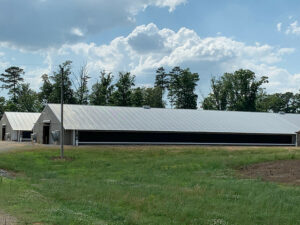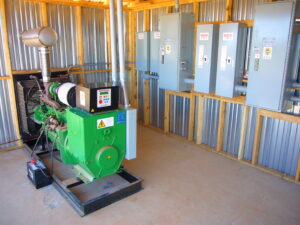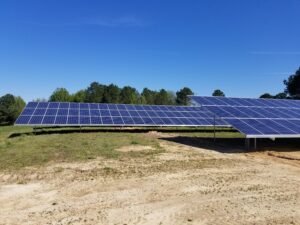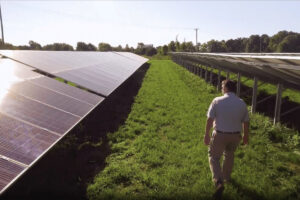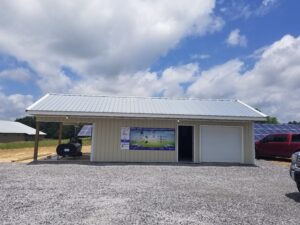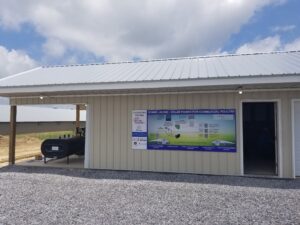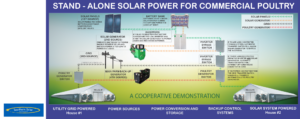In collaboration with Tyson Foods Inc., Auburn University’s National Poultry Technology Center (NPTC) has opened a solar-powered poultry house that will be operated completely off the grid.
The 54-foot by 500-foot poultry house, located in Cullman County, Ala., is capable of housing 36,000 broilers. It will be one of two identical houses on Tim and Selena Butts’ farm; one house will be the control house, while the other will be operated exclusively by solar power.
“Auburn University’s NPTC will work closely with Tyson Foods and Southern Solar Systems to provide leadership in the application of solar power technology to broiler production houses,” says Paul Patterson, dean of Auburn’s College of Agriculture. “The research will provide important new information on how solar power technology can improve environmental sustainability and profits for farmers.”
The house’s power will derive from three components: solar photovoltaic, battery storage and a generator. On-site researchers will compare its energy use regularly with the operation of the adjacent house over a 12-month cycle.
“Ultimately, this project will allow us to identify how solar houses might improve farmer profitability and bring increased efficiency to the poultry industry,” says Chip Miller, vice president of poultry live operations for Tyson Foods. “Through our partnership with Auburn University’s NPTC, we are creating a model for the future of the industry – one that is more sustainable and brings critical value and insights, previously unavailable, to poultry farmers.”
Project Details:
- Power one 54×500 broiler house with all electric power from SAS micro-grid-on Pow Co
- Using: 120KW of solar PV panels, 175 KWH of usable battery storage, 40 KW generator
- Converting “wasted” PV power to usable for heat / cooling using 8 tons of heat pump capacity
- Estimate replacing 25-35% gas usage for heat = dry heat, lower humidity, better litter conditions
- Estimate lowering cool pad usage = less water use, lower humidity, better bird cooling
- Projected overall production cost savings of $2000 – $3000 per year, per house
- Control Shed houses batteries, inverters, all switches, metering, A/C conference area and outside covered area for diesel generator and 250 gal fuel tank
- Separate enterance into the SAS system area for bio-security
- House#2 will be powered by SAS system completely, House#1 will remain as-is for camparison
- Al power usage / fuel usage / water usage for both houses will be monitored
Additional Benefits:
- Long term power cost and power quality stabilization
- Decreased castastrophic risk for grower / integrator = multiple power sources
- Positive Envioronmental Impacts – 1.5 / wk Broiler Complex = 12.250 TON of GHG caputured
- Potentially lower wind speed requirements for cooling
- Potentially decrease cool pad requirements

